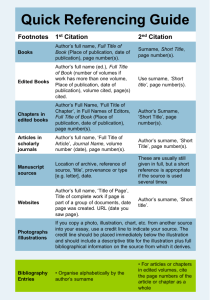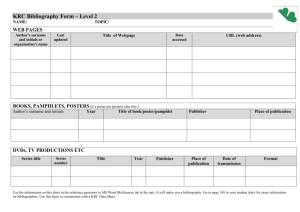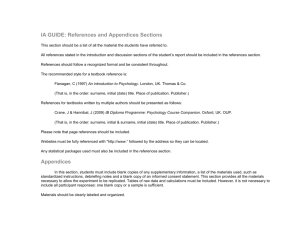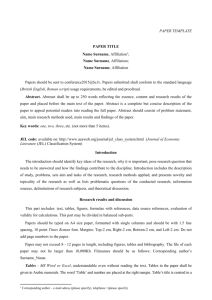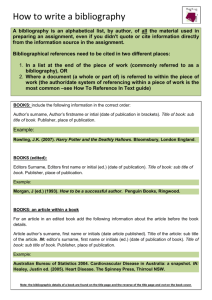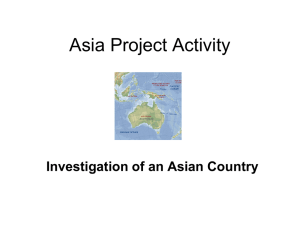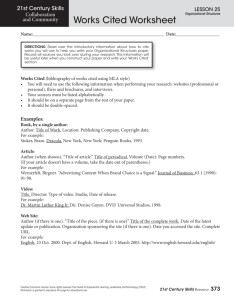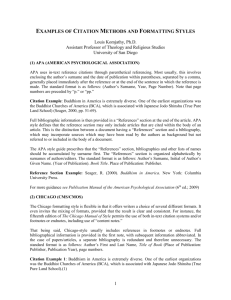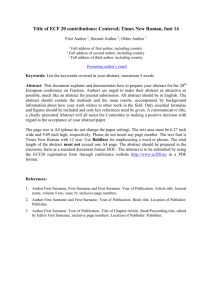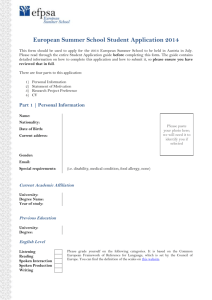SAPS - Activity 6 - teachers notes
advertisement
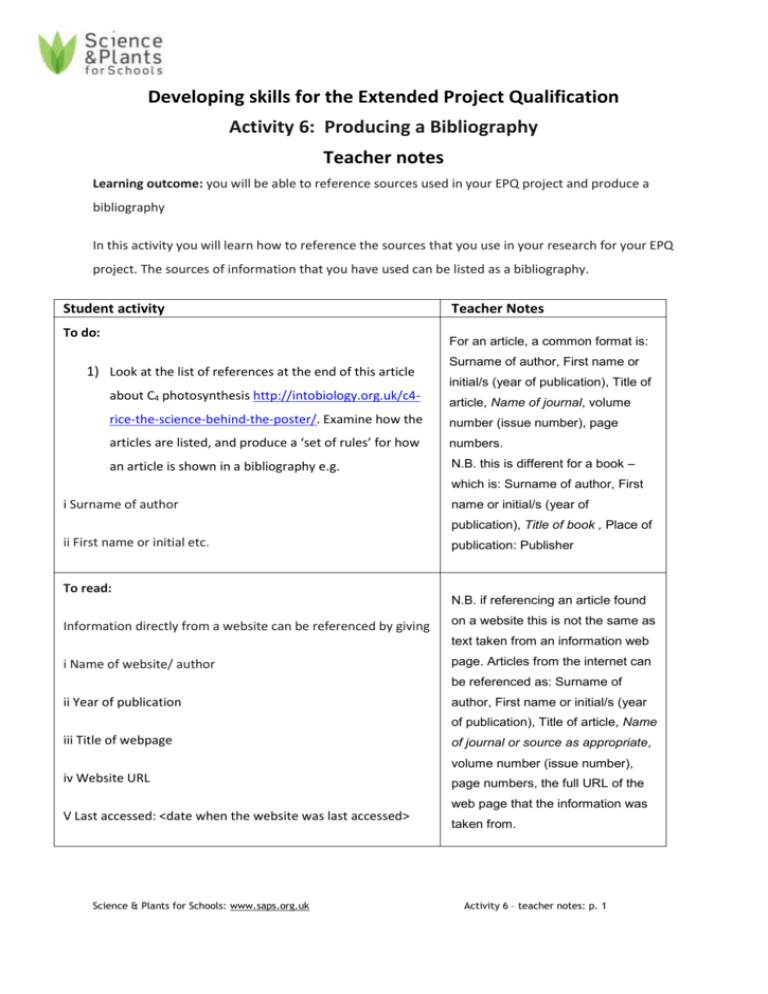
Developing skills for the Extended Project Qualification Activity 6: Producing a Bibliography Teacher notes Learning outcome: you will be able to reference sources used in your EPQ project and produce a bibliography In this activity you will learn how to reference the sources that you use in your research for your EPQ project. The sources of information that you have used can be listed as a bibliography. Student activity To do: Teacher Notes For an article, a common format is: 1) Look at the list of references at the end of this article about C4 photosynthesis http://intobiology.org.uk/c4- Surname of author, First name or initial/s (year of publication), Title of article, Name of journal, volume rice-the-science-behind-the-poster/. Examine how the number (issue number), page articles are listed, and produce a ‘set of rules’ for how numbers. an article is shown in a bibliography e.g. N.B. this is different for a book – which is: Surname of author, First i Surname of author name or initial/s (year of publication), Title of book , Place of ii First name or initial etc. publication: Publisher To read: N.B. if referencing an article found Information directly from a website can be referenced by giving on a website this is not the same as text taken from an information web i Name of website/ author page. Articles from the internet can be referenced as: Surname of ii Year of publication author, First name or initial/s (year of publication), Title of article, Name iii Title of webpage of journal or source as appropriate, volume number (issue number), iv Website URL V Last accessed: <date when the website was last accessed> Science & Plants for Schools: www.saps.org.uk page numbers, the full URL of the web page that the information was taken from. Activity 6 – teacher notes: p. 1 To do: This is an opportunity to refer to 2) Choose an interesting passage from one of the Inspiring plagiarism and how to avoid it. Science articles on the IntoBiology website http://intobiology.org.uk/. Rewrite the ideas in the passage in your own words. Now write a reference for e.g. Dr. Emily Trentacost from the Scripps Institution of Oceanography has genetically modified algae to this (i.e. showing the web page it has come from) as if produce higher quantities of lipids you had included it in your project report. that can be used for fuel. Emily and her team did this by limiting the action of lipases which break down fat molecules. IntoBiology (2015) Often, an author’s surname and the date of the publication Trentacost, E, Fat algae fuel the being cited are referred to directly in the text. future, http://intobiology.org.uk/fatalgae-fuel-the-future/ Last accessed: 3) Go to the Google Scholar website and 2nd July 2015 search for an article published in the past two years on photosynthetic pigments. Find and copy a sentence which includes an ‘in text’ citation of an article. Find where the full details of the cited article are in the main article. A superscript number is inserted where the article is cited (i.e. where information from the article is used). A list of the cited references is made 4) Write a ‘set of rules’ for how you cite and list references. at the end of the main article. These are in order of the citation numbers. The format of the literature cited is the same as in 1) above. 5) In your group, compare the two sets of rules that you have produced, for listing an article in a bibliography and for making an in text citation. Combine your ideas and then agree on a single pair of protocols to guide you when writing up your project report. Further work Students may read books, interview experts, ask teachers questions, Science & Plants for Schools: www.saps.org.uk Activity 6 – teacher notes: p. 2 6) List other sources of information that you may use in your project. Find out how these can be referenced in a report. Share your findings in your watch videos and TV programmes or visit museums. All of these should be referenced. group. Reflecting on learning Encourage students to compile a Produce a table that links different types of reference sources to the ‘rules’ for how to refer to these in an article or report. Science & Plants for Schools: www.saps.org.uk folder of useful guidance notes for writing up their project report. Activity 6 – teacher notes: p. 3

